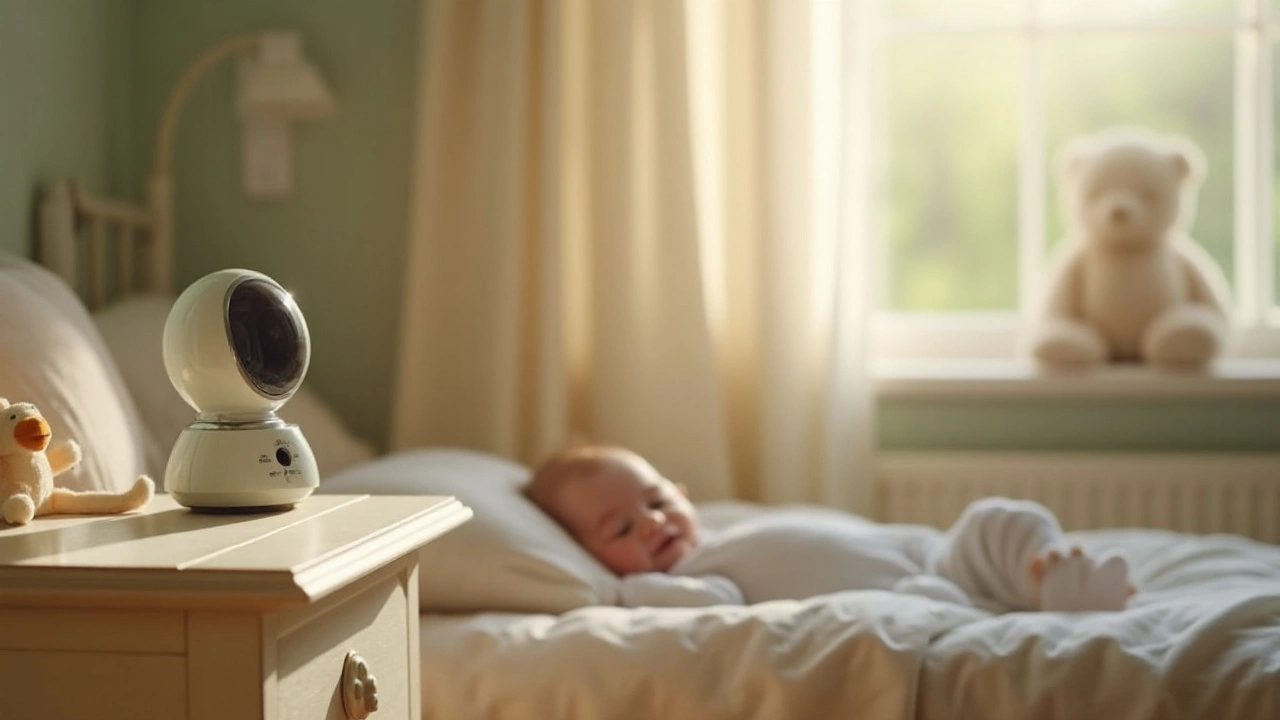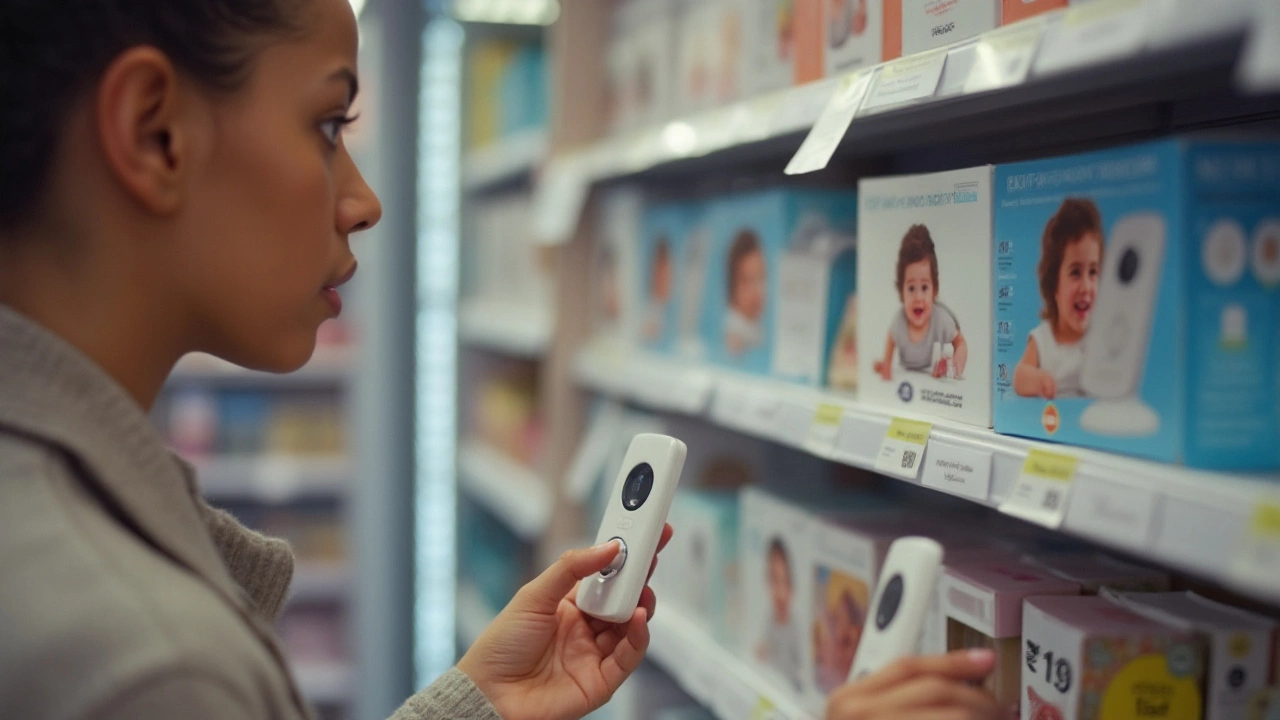Are Non Wi-Fi Baby Monitors a Safer Choice for Parents?

In today's high-tech world, parents face a multitude of choices when it comes to keeping an eye on their little ones. Baby monitors have come a long way since their inception, becoming must-have gadgets for new and seasoned parents alike. But as homes become smarter, choosing the right baby monitor poses a new set of challenges, especially around safety and privacy.
The ongoing debate between Wi-Fi and non Wi-Fi baby monitors centers around these very concerns. Parents worry about the potential for hacking and privacy intrusion with Wi-Fi connected devices, leading many to consider non Wi-Fi models as a more secure alternative. These monitors typically use FHSS (Frequency Hopping Spread Spectrum) technology, which is harder to intercept.
As you navigate the choices available, it's critical to understand both the technical and practical aspects of non Wi-Fi baby monitors, weighing their benefits and downsides. With thoughtful consideration, you can select the best option for ensuring your child's safety and your family's peace of mind.
- Understanding Non Wi-Fi Baby Monitors
- Security Advantages of Non Wi-Fi Monitors
- Potential Downsides of Non Wi-Fi Models
- Tips for Selecting the Best Non Wi-Fi Monitor
- Real-life Experiences from Parents
Understanding Non Wi-Fi Baby Monitors
As parents venture into the world of keeping tabs on their babies, the type of baby monitor they choose can make a significant difference in terms of safety and privacy. Non Wi-Fi baby monitors have emerged as an appealing solution for parents who prioritize security. Unlike their Wi-Fi counterparts, these monitors operate using FHSS or digital radio frequencies, effectively minimizing the risk of unauthorized access. This distinction becomes crucial in an age filled with digital threats, where wireless signals can be intercepted by anyone with hacking skills.
One of the standout features of non Wi-Fi monitors is their resilience to digital interference. While Wi-Fi monitors can suffer from connectivity issues if your internet becomes spotty or you live in an area surrounded by several Wi-Fi networks, non-Wi-Fi monitors tend to offer more reliable connections. This ensures that parents can depend on these devices around the clock without the nagging worry of buffering videos or delayed audio alerts. Such reliability is a godsend for new parents who depend on uninterrupted monitoring to ensure their child's safety, particularly during nap times or at night.
The absence of internet connectivity in these monitors also means they are safeguarded against data breaches. A 2023 report highlighted a concerning trend: baby monitors using Wi-Fi technology had an increasing rate of hacking incidents resulting in compromised digital safety. Such statistics have propelled many parents toward non-Wi-Fi options, even though they might have to forgo some advanced features like smartphone alerts or remote monitoring. The decision ultimately boils down to weighing the importance of fancy technology against the assurance of privacy.
The Appeal of Simplicity
One of the underrated aspects of non Wi-Fi baby monitors is their simplicity. Setting up a non Wi-Fi unit is often a straightforward process, involving nothing more than plugging in electrical cords and adjusting a few settings. There's no need to worry about pairing devices to a router or navigating through complex apps. This fuss-free operation appeals particularly to busy parents who might not have the time or technical inclination to deal with potential hiccups involved with app-based monitors. Parents value effective simplicity that gets the job done without unnecessary technological obstacles.Cathy Livingston, a technology columnist for "Parental Insight Magazine", noted, "For parents born in another era of gadgets, non Wi-Fi baby monitors provide peace of mind—both from a tech simplicity angle and the reassurance of impenetrable privacy."Her sentiment echoes a growing communal understanding that simplicity wrapped in security is incredibly comforting.
Security Advantages of Non Wi-Fi Monitors
Parents today are more vigilant than ever about the security of their homes, especially when it involves their children. Non Wi-Fi baby monitors offer a distinct set of advantages that are worth considering if you’re concerned about digital intrusions. These monitors operate on radio frequencies, similar to a cordless phone, which means they don't require internet connectivity to function. This simple yet effective technology makes it significantly harder for hackers to intercept conversations or video feeds, providing an additional layer of security for the family.
One major security advantage of non Wi-Fi models comes from their use of FHSS technology. This technology randomly changes the frequencies used during transmission, making it incredibly challenging for anyone outside the intended recipient to pick up the feed. Unlike some Wi-Fi models, where signals are often broadcasted over the home’s network and potentially vulnerable to cyber attacks, FHSS keeps such threats at bay. Additionally, these monitors often require close proximity between the transmitting and receiving units, further minimizing the chances of unauthorized access.
“Many security experts advocate for non Wi-Fi monitors due to their resilience against hacking attempts. With less reliance on internet connectivity, they sidestep a lot of the vulnerabilities inherent in digital network systems,” notes Tara Turner, a cybersecurity specialist.
Moreover, the lack of a connection to the internet means that non Wi-Fi monitors do not suffer from slow network speeds or outages. Parents can trust that their baby monitor will always work when they need it most, regardless of the state of their home’s Wi-Fi. This reliability can be a crucial aspect for busy parents who cannot afford any disruptions in the operation of their monitoring devices.
The privacy offered by these monitors is often complemented by user-friendly designs. They are typically plug-and-play, requiring no complex set-up or app installations that might inadvertently introduce vulnerabilities. Without the need for external servers or storage, any recorded audio or video remains on the device, avoiding potential breaches through cloud storage.
However, as with any technology, potential users must weigh the options and needs specific to their household. Non Wi-Fi monitors, while rich in security features, may offer limited range compared to those connected to Wi-Fi, a trade-off some families are more than willing to accept for the peace of mind it brings. Parents often appreciate the balance of simplicity and security, especially in an age where digital threats are constantly evolving.

Potential Downsides of Non Wi-Fi Models
While non Wi-Fi baby monitors have an undeniable appeal due to their increased security from online threats, these models do come with their own set of limitations. One of the apparent drawbacks is the limited range that non Wi-Fi models often possess. These devices typically operate using radio frequencies, which means they might not provide the extensive coverage area that Wi-Fi-enabled monitors offer. For families living in larger homes, this can be a significant issue, as the reliable range is usually around 1000 feet or less, and walls or other obstacles can further reduce this distance.
Another issue to consider with non Wi-Fi baby monitors is the potential for interference from other electronic devices. Many household electronics, such as microwaves, cordless phones, and even Bluetooth devices, can cause interference, leading to white noise or static on the monitor. This interference can be particularly frustrating during nighttime checks when parents rely on clear audio and video to ensure their baby's well-being. Unfortunately, not all non Wi-Fi monitors are equipped with advanced technologies to mitigate these disruptions.
Parents might also find that non Wi-Fi monitors lack the advanced functionalities that have become standard in smart monitors. Features like sleep tracking, room temperature monitoring, and even lullabies are often omitted. For tech-savvy parents desiring comprehensive insights into their baby's sleeping habits and environment, non Wi-Fi models might feel somewhat underwhelming. This lack of additional features sometimes leaves parents relying on other gadgets, complicating their device ecosystem rather than simplifying it.
On top of these technical aspects, there's an emotional and psychological dimension to consider. Some parents find reassurance in the ability to check in on their baby from anywhere, using their smartphones. Non Wi-Fi models restrict this ability, often making it impossible to monitor your baby while away from home. This limitation can be a dealbreaker for working parents or those who travel frequently. As one mother aptly put it in an interview with Parenting Weekly,
"I loved knowing that I could just peek into my phone during lunch and see my daughter. With non Wi-Fi, I lost that sense of immediate connection."
Finally, for those who care deeply about future-proofing their investments, non Wi-Fi monitors might not hold their appeal. Technology evolves rapidly, and while the initial peace of mind regarding security is valuable, these monitors might not be compatible with future smart home integrations. This lack of adaptability can make them less appealing in the long run, particularly for those heavily invested in creating a cohesive smart home environment.
Tips for Selecting the Best Non Wi-Fi Monitor
In today's tech-savvy world, finding the right baby monitor often feels like sifting through an endless array of options. For parents leaning towards non Wi-Fi baby monitors, the quest becomes all the more crucial due to the balance between privacy, functionality, and simplicity they provide. Start by considering the safety features these devices offer that often outshine their Wi-Fi counterparts. Look for models that use FHSS technology, which scrambles and transmits signals across various frequencies, making it much harder for anyone to intercept. This kind of technology is crucial in preventing unauthorized access and ensuring your child's privacy is safeguarded.
Sound quality is just as important as security when selecting a baby monitor. Opt for those with crystal-clear audio capabilities so you won't miss a single coo or cry. Many parents find that audio clarity offers peace of mind, especially during nighttime hours, when every little sound becomes significant. Personal preference plays a significant role here, so think about where the baby monitor will mostly be used and whether portability is crucial for your family’s needs. Portable monitors often come with rechargeable batteries and a good range that extends throughout the home, offering you the freedom to move while staying connected.
Video quality shouldn't be overlooked either. Some non Wi-Fi baby monitors come equipped with high-quality LCD screens that offer vivid imagery of your baby as they nap or play. Features such as the ability to pan, tilt, and zoom can be quite handy. Parents often appreciate monitors with night vision, which allows them to see clearly even in dim or dark rooms. However, these extra features can often impact cost, so it's essential to weigh your desires against your budget.
Sally from The Parenthood Organization mentions, "Choosing a monitor that suits both your lifestyle and comfort level is key. Many parents overlook the privacy benefits that non Wi-Fi monitors provide, only realizing their importance when faced with privacy threats."
Another critical feature to consider is ease of use. Systems with complicated setups or hard-to-navigate interfaces can cause unnecessary stress. A straightforward system with an intuitive user interface is usually best, especially for parents who may feel overwhelmed by too many buttons or configurations. Most non Wi-Fi monitors are user-friendly and designed for foolproof operation, requiring minimal adjustment and providing maximum comfort.
Finally, think about additional features that you might find beneficial. Some monitors come with built-in lullabies or a two-way talk feature so you can comfort your baby from afar. Suppose you like to keep track of room temperature; a model with an integrated thermometer might be your best bet. Make sure the unit you choose includes a decent customer support plan and comes with a warranty. Taking the time to explore all these options will ensure you make an informed decision.

Real-life Experiences from Parents
The journey of parenting is filled with both daunting challenges and rewarding moments. For many parents, choosing between Wi-Fi and non Wi-Fi baby monitors becomes a topic of much deliberation. Real-life feedback from parents offers valuable insights into why some are opting for non Wi-Fi options. Laura, a mother of two from Chicago, shares that she switched to a non Wi-Fi monitor after her first baby. “My oldest daughter’s monitor had this annoying lag time because of constant Wi-Fi bandwidth issues, and then there was this scare about network vulnerabilities,” she explains. Like Laura, many parents appreciate the straightforward reliability of non Wi-Fi monitors, resonating with the peace of mind it introduces in their daily lives.
Another parent, Greg, a tech-savvy father from Austin, highlights the aspect of ease. “I gave up the fancy features for something that just works, no apps to crash or signals to drop,” he confesses. Many parents express how the absence of apps and complex connectivity makes non Wi-Fi monitors feel less intrusive and more focused on their primary function—knowing their child is safe. Notably, safety concerns are paramount. A 2023 survey conducted by the National Parenting Committee indicated that over 67% of parents worried about the hacking vulnerability of Wi-Fi-enabled baby monitors.
"When it comes to the safety of our parents and children, nothing is too cautious; privacy should be a given, not an option," emphasizes Sarah Thompson, a family safety advocate.
Living in a world entrenched with digital risks, parents like Emily, who resides in New York, point out practical advantages: “Non Wi-Fi monitors are truly plug-and-play. No downloading an app or remembering passwords,” she laughs. Having hemispherical clarity allows parents to focus on other pressing tasks knowing their monitor is always on guard. Such sentiments illustrate a recurring theme— trust and reliability actually winning over the allure of high-tech features in baby monitors. In essence, these choices weigh heavily on a simple principle within parenting: safeguarding the innocence and well-being of their baby, unclouded by the tech frenzy of our times.

